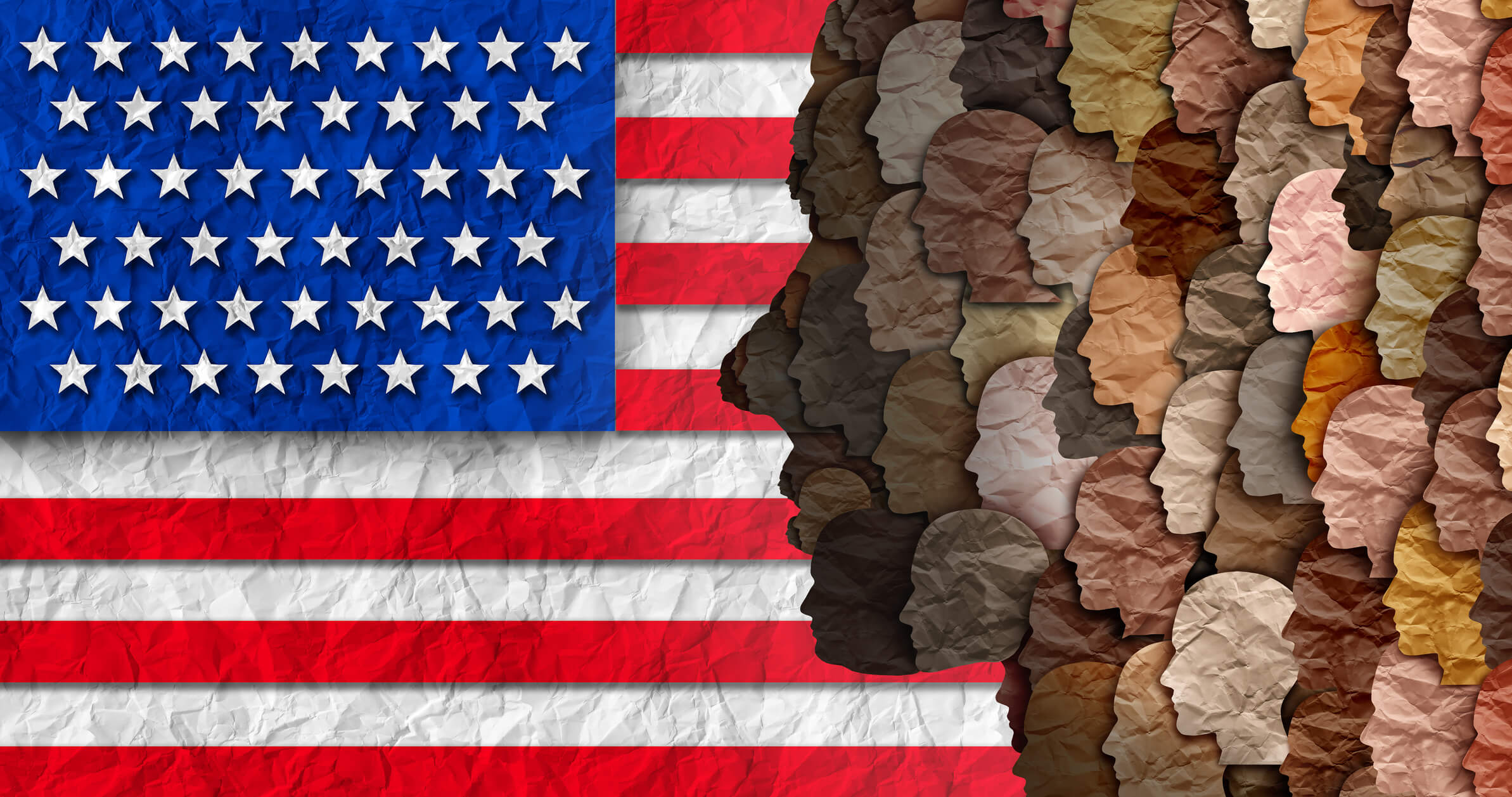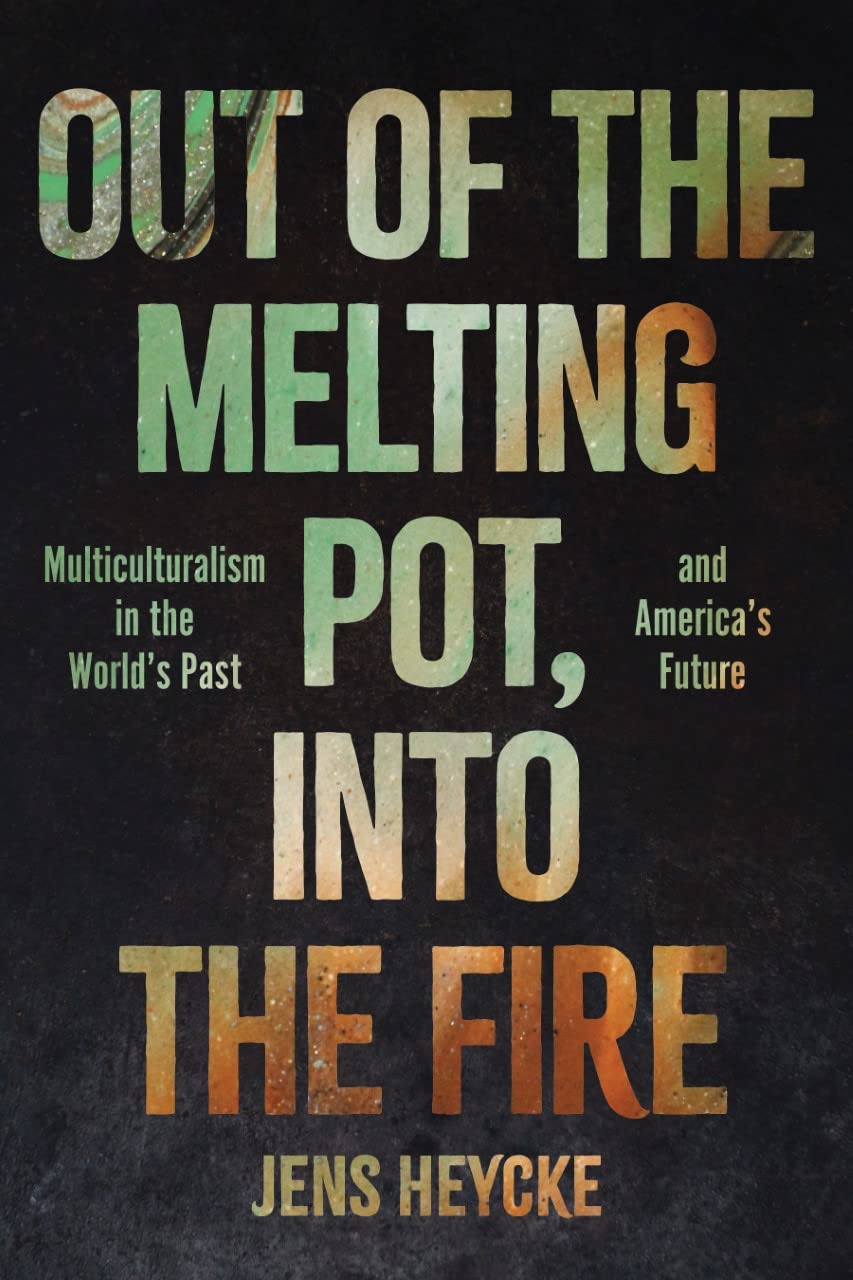How did Imperial Rome stand for so long against so many opponents, while the Aztec empire crumbled quickly under the assault of a numerically inferior foe?
The answer is complicated, as the two empires were dissimilar in innumerable ways. Yet the conventional accounts seldom touch on what the author of Out of the Melting Pot, Into the Fire puts front and center. In Jens Heycke’s judgment, successful assimilation of ethnically distinct populations into a common national identity in the first case and a divisive multiculturalism in the second tell most of the story.
No question is more urgent in contemporary America: should we assimilate immigrants with an interest in social unity or should we embrace multiculturalism and allow cultural difference to run rampant? The multiculturalists who form the elite of American society daily hasten to find further ways to impose on us just the kind of anti-integrative regime of ethnically exclusive identities and interests that this book argues will inevitably produce chaos.
Heycke starts with the cases of Rome and Mexico, then traces the contrasting outcomes of assimilation and multiculturalism in early Islamic civilization, Sri Lanka, the Balkans, Rwanda, and Botswana. In all cases in which the fragmentation of diverse identities was opposed by a staunch political effort to build a unified national identity, Heycke argues, ethnic conflict was minimized and the economic benefits for the entire society were bountiful.
The book’s basic claim about the toxicity of the kind of multiculturalism that has become the prevailing cultural policy in the contemporary U.S. is beyond doubt. The eagerness of our elite to punish the slightest criticism of its faith in the utopia of diversity is itself a good indication of where the truth lies.
There are, though, limitations to Heycke’s argument. Not all of the book’s examples hold up well to scrutiny. He argues, based on a few select quotations from the Qur’an and the Hadith and analysis of some early Islamic coins, that Islam early on was fundamentally committed to “ecumenism.” Yet copious evidence contradicts the claim that early Islam was a fundamentally integrative social order. Muhammad’s genocidal assault on the Jewish Banu Qurayza tribe is but one of many examples from just the period Heycke wants to claim as a time of assimilationist harmony in early Islam. And he admits that integrative efforts were limited to elites. Those at the top of social hierarchies could convert and achieve higher status, and even be recognized as qualified members of the ummah. But the non-Muslim masses were kept outside the integrated community of identity.
Even by Heycke’s optimistic account, the integrative social phase of early Islam only lasted about a half century. Then, with ferocious energy, Muhammad’s followers turned to the kind of vigorous identity-based politics we recognize in so much of the Muslim world today. The most believable explanation is that Islam needed time to build its political structures according to its fundamental precepts. Once that was done, any idea of a Muslim melting pot itself melted into thin air.
There is no doubt that, as this book argues elegantly, there are enormous costs to ethnic division. But the entire history of the human sciences reveals just how deeply ingrained this feature of human societies and psyche is. If only it were so easy to change this reality simply by presenting the empirical evidence and making logical arguments about the negative consequences that follow from the foggy propensity to divide ourselves up along cultural, national, ethnic, and racial lines.
“Ethnic fractionalization,” as the author names this phenomenon, is indeed a powerful predictor of conflict and low cooperation in a society. It is also true that some societies have, however briefly, been successful at submerging significant ethnic differences into shared identity, with consequent social benefits. The historical record of the American melting pot—though it is more complicated and its successes more limited than its advocates would like to admit—reveals a fair amount of successful absorption of different ethnic groups into a common national identity.
But it must be acknowledged that the reason human beings default to ethnic fractionalization so easily, and often so violently, reaches far back into our history as a species. As a matter of long evolution, human beings prefer others who look, sound, and act like them to those who are more distant from them. In the great majority of our time as a species, spent living in small nomadic groups, it was advantageous for people to learn to trust those who shared tribal bonds, cultural practices, and physical features over those with whom they had less in common.
The practice goes back to the time even before our species emerged. It can be seen in our close primate relatives. Chimpanzees are as avid to express in-group solidarity and out-group hostility as we are, if not more so because they lack the reasoning capacities we at least sometimes use to mitigate these deep behavioral predilections.
None of this makes the phenomenon morally desirable or defensible. The background simply explains why it exists and suggests how difficult it will likely be to chip away at its staying power. Heycke’s book effectively describes a few historical examples that show how societies with ethnic differences can benefit collectively from deemphasizing those differences, rather than embracing them as contemporary multiculturalism tells us to do. But this work suggests no new tools that might make us more capable to avoid playing the ethnic fractionalization game.
Alexis de Tocqueville was bleakly realistic about America’s multicultural foundations. In a lengthy concluding chapter of the first volume of Democracy in America, he described the country’s situation regarding the ethnic fragmentation present from its outset. Three highly disparate groups with origins, respectively, in Europe, sub-Saharan Africa, and North America have been in interaction here all along. And from the start, those interactions have been marked by perceived group differences of interest and conflict over those differences.
Later, when the country first began admitting significant numbers of immigrants of disparate ethnic backgrounds, assimilation to the dominant culture of the founding European groups was vigorously pursued. This assimilation was imperfect, but it achieved some success for about a century. From the mid-1960s onwards, though, the country has largely given up that assimilationist ethic, and conflicts have again become endemic and potentially lethal to the whole national project.
Tocqueville predicted it all. In that chapter in Democracy in America, he offered one solution to the problem of racial and ethnic difference in the United States. The different groups—Europeans, Africans, and indigenous Americans—must sufficiently intermarry and procreate together to make racial distinctions less apparent. Only this could produce enough dissolution of the boundaries separating them to perhaps eventually erode this source of American social disharmony. Tocqueville was not hopeful, though, that such a solution could be achieved.
How much less likely is it now, when the number of groups and the extent of their differences are so much greater? It is true that rates of intermarriage across ethnic and racial boundaries have significantly increased since Tocqueville’s time. Yet the norm is still for the vast majority of members of all groups to marry others in their group.
Out of the Melting Pot, Into the Fire concludes with an admirable statement of the assimilationist project: “There are no groups. We are all Americans.” Many of us still believe this. Most of our leadership class, however, demonstrably does not. Its members are determined to guide society in the very direction most likely to awaken and accentuate the latent avidity of human groups for mutual animosity based on identity. This does not bode well for the possibility that we will ever again be able to assert a baseline Americanness as a common, unifying national commitment.















